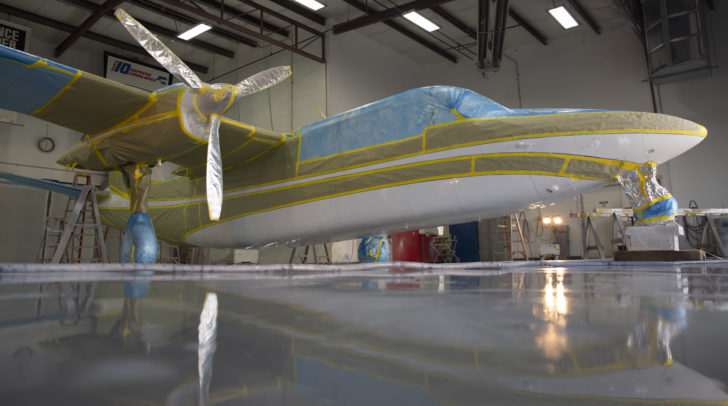
Aircraft painting is a highly specialized and complex operation. It’s not something every shop can handle, even if they throw up a few pieces of plastic and declare themselves open for business.
In the Twin Commander Factory Authorized Service Center network, only a few shops perform major touch-ups or complete repainting jobs. Byerly Aviation has been in the aircraft painting business for a long time, and General Manager Tim McKune said they have painted many of the Twin Commanders in the fleet. “We can handle anything from an RV-4 to a Lear 45,” he said.
Byerly completes about one full repainting and one touch-up job a month. Twin Commanders take between 20 and 25 days to repaint, he said. Most of that work is preparation, which is the key factor in the finished product. Jerry Pyatt is the head of Byerly’s paint shop. “It doesn’t matter how good the painter is, if the prep work isn’t good it’s not going to hold up,” he said.
The prep work includes stripping, sanding, and anti-corrosion application. As you can imagine, all the little nooks and curves on an airplane add to the job’s complexity and potential for problems. If those areas aren’t completely clean, the paint may not hold as long as it should.
Once the anti-corrosion treatment has been applied the painter has about 48 hours to apply the base coat. This is where customer preferences start to come in. If a paint scheme includes a single base color and some accent striping, the job is fairly straightforward. That’s reflected in the fact that Byerly’s base rate includes the base and two accent colors. But McKune said customers are opting for more bold two-tone schemes with multiple accent colors. Those two-tone bases increase the weight, cost, and time. The entire aircraft must be painted with the white base, and then the second base color is added on top. Why paint one area twice? So any accent colors that go across the two different bases retain the same tone.
Pyatt said a Twin Commander base takes about six gallons of paint. White isn’t terribly expensive, but colors can really increase the cost. A specific red he had just quoted for a customer was $800 a gallon. In general reds, yellows, and blues are more expensive.
Once the base coat is applied, it’s time to stripe. McKune said they have learned over the years that the most successful way to ensure customers are happy is to have them present on the day the aircraft is striped. Complex patterns can take three or four days, but if the customer evaluates it prior to painting, he or she can talk through items that didn’t necessarily translate from scheme to metal. Drawing a scheme in two dimensions is much different than seeing it in three dimensions, so this step is important to make sure everyone is on the same page.
From there it’s a matter of finishing the striping, and if necessary, applying the clear coat. Clear coats add shine and some protection. The downside is that they add weight and cost. If you brush your fingers across an aircraft’s stripes and don’t feel bumps it’s been clear coated. The process is optional for traditional paints, but required for metallics.
If properly maintained, there’s no reason a paint job shouldn’t last for decades. McKune said he’s not even sure what the company’s warranty is because they’ve only had one claim in the time he’s worked there, and that was for bad product.
Other shops in the network that currently offer extensive touch-ups include Eagle Creek Aviation Services. They just opened a custom mixing room and have expanded their capabilities in recent years. Today they can repaint most components, reducing downtime for aircraft already in the shop for upgrades or extensive repairs. N-number changes are another common job, and Eagle Creek can handle those as well.
In addition, Aero Air, General Aviation, Legacy Aviation Services, Naples Jet Center, National Flight Services, and Winner Aviation can perform touch-ups. General Aviation in Australia also has the ability to handle full aircraft repainting.

Eagle Creek Aviation Service’s custom paint mixing room features AkzoNobel paint.
